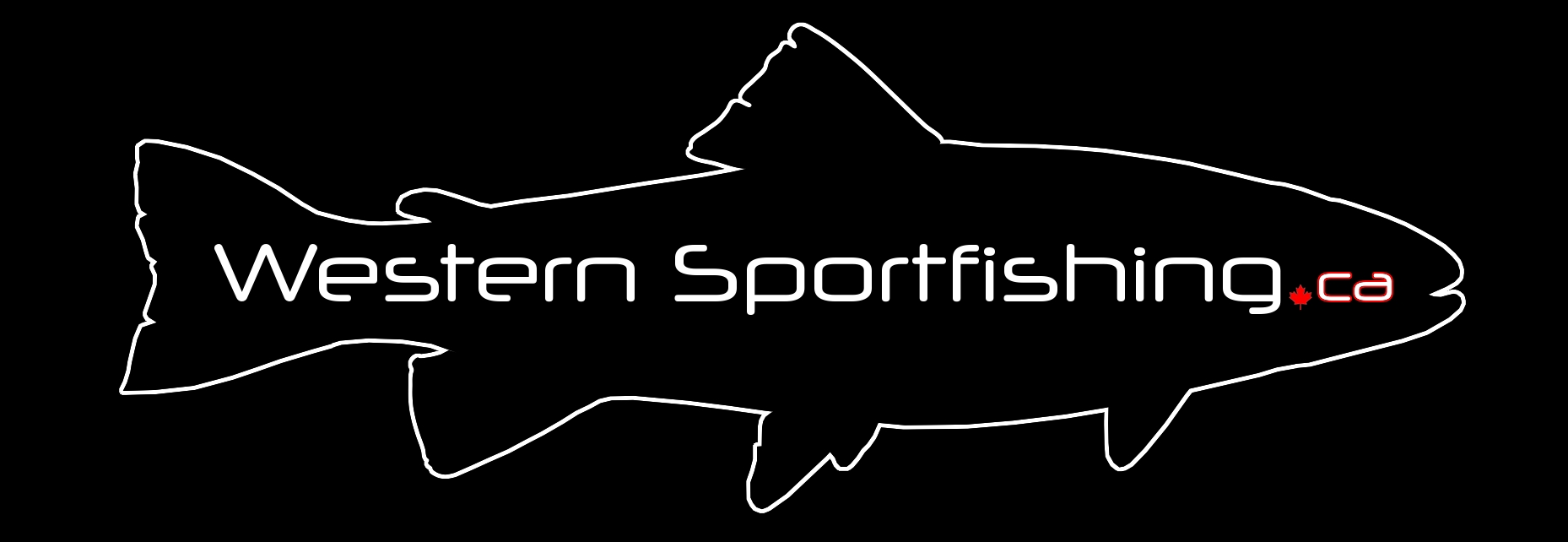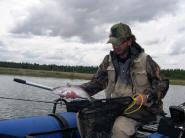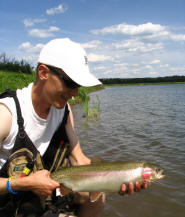
Spring Thaw: Early Season Trout
The first glimpse of sun breaks across the landscape. Temperatures begin to rise, and the depression of a long winter slowly begins to fade. The fly boxes are stocked. Rods, reels, and other gear beg to be used again. Anticipation of ice-off on the lakes begins to really set in. As the wind and sun do their part in opening up the frozen water bodies, anglers jump at the first chance to cast a line.
 Almost every year, the
aforementioned story is true.
Spring ice-off is one of the most exciting events of the lake
fishing season. It is
arguably the best time to catch plenty of hungry trout in shallower
water than you would normally fish.
This special time of year might also be your best shot at
catching the larger trout that have been elusive at other times of
the year. The amount of
ice that is off the lake could be a factor; but, as little as 10-15
feet of open water along the shoreline has proven to suffice on past
fishing trips. Remember,
the fish enjoy the warming weather as much as we do at this time of
year, so they can be as close to the shoreline as the cover of water
allows. Employing the
proper ice-off tactics will usually result in a fine day of fishing.
Almost every year, the
aforementioned story is true.
Spring ice-off is one of the most exciting events of the lake
fishing season. It is
arguably the best time to catch plenty of hungry trout in shallower
water than you would normally fish.
This special time of year might also be your best shot at
catching the larger trout that have been elusive at other times of
the year. The amount of
ice that is off the lake could be a factor; but, as little as 10-15
feet of open water along the shoreline has proven to suffice on past
fishing trips. Remember,
the fish enjoy the warming weather as much as we do at this time of
year, so they can be as close to the shoreline as the cover of water
allows. Employing the
proper ice-off tactics will usually result in a fine day of fishing.
Whether fishing from the
shoreline or from a boat, the tactics for early season still-water
trout are almost always the same.
Popular depths in almost any lake are usually the 3-12 foot
zones where the water temperatures can increase the most, and supply
the active trout with a surplus of food.
The major food items that trout tend to feed on early in the
season include scuds, backswimmers/boatmen, bloodworms (chironomid
larvae), leeches, and dragonfly nymphs.
These items are readily available at this time, and offer a
good opportunity for the trout to fatten up.
As the weather warms, chironomid pupae, mayfly nymphs, and
damselfly nymphs will become more prevalent, offering up even more
opportunity to the observant angler.
With so many food items available, arriving at a lake and deciding what fly to choose can look like a chore; however, paying attention to the water in front of you can give you a glimpse into what the trout might be after. Cone-head Mohair Leeches are my preference (as well as my fishing partners’) for searching out trout. More often than not, employing a two-fly rig of a leech pattern with any dropper that you might see fit (backswimmer, scud, chironomid, etc) will catch fish, and give you the opportunity to narrow your fly selection until you have found a good match. This does not mean that a leech has to be used on every set-up, so experiment with different combinations.
Rod selection is more of a personal preference, and can vary depending on the size of trout you are after. Five or six-weight fly rods in 8.5 to 9.5 foot lengths are most common, and can handle a variety of situations while on the lake.
Since the water depths being
fished at this time of year tend to
 be on the shallower side, a
floating fly line is often the line of choice.
Leaders up to 15 feet in length, and in the 4-7 pound range
are common. Fluorocarbon
leaders are preferred in clear water situations as they are
virtually invisible to the trout.
Attaching a strike indicator to the leader will give you the
advantage of having your fly in the strike zone for a sustained
period of time, as well as the ability to detect subtle strikes.
The more recent introduction of the “Phil Rowley Quick
Release Indicator” has proven to be the most practical indicator for
lake fishing. Once a
fish is hooked, the indicator pops down, and is clear of the rod
while fighting the fish.
be on the shallower side, a
floating fly line is often the line of choice.
Leaders up to 15 feet in length, and in the 4-7 pound range
are common. Fluorocarbon
leaders are preferred in clear water situations as they are
virtually invisible to the trout.
Attaching a strike indicator to the leader will give you the
advantage of having your fly in the strike zone for a sustained
period of time, as well as the ability to detect subtle strikes.
The more recent introduction of the “Phil Rowley Quick
Release Indicator” has proven to be the most practical indicator for
lake fishing. Once a
fish is hooked, the indicator pops down, and is clear of the rod
while fighting the fish.
The technique required with
this floating line rig can be very simple, as long as you read the
water properly. Paying
attention to points, bays, and shoals will increase your odds of
hooking into nice fish.
Once you have found your desired area and made your fly selection,
you can raise your indicator to a starting
 depth.
If you are fishing from shore, or from a boat, you always
want to start by casting to the closest structure first.
Cast out, and let the fly sink.
You can then begin a slow hand twist retrieve, stopping for a
pause every 2 or 3 short twists.
If there is wind causing a riffle on the surface, a constant
retrieve is most often not required.
Just keep good control of your line, and let the wind do the
work. As a basic rule to
remember in this instance: if the wind gets heavier, more weight
should be added to keep the fly in the desired zone.
depth.
If you are fishing from shore, or from a boat, you always
want to start by casting to the closest structure first.
Cast out, and let the fly sink.
You can then begin a slow hand twist retrieve, stopping for a
pause every 2 or 3 short twists.
If there is wind causing a riffle on the surface, a constant
retrieve is most often not required.
Just keep good control of your line, and let the wind do the
work. As a basic rule to
remember in this instance: if the wind gets heavier, more weight
should be added to keep the fly in the desired zone.
 Cover as much of the water
as you can. Vary your
retrieves. Change flies,
change depths, and be observant.
Keeping these tips in mind while early season still-water
fishing will increase your chances of success; and, also set you on
the path to learning more about fishing the “spring thaw”.
Cover as much of the water
as you can. Vary your
retrieves. Change flies,
change depths, and be observant.
Keeping these tips in mind while early season still-water
fishing will increase your chances of success; and, also set you on
the path to learning more about fishing the “spring thaw”.
One last thing to keep in
mind is that this is